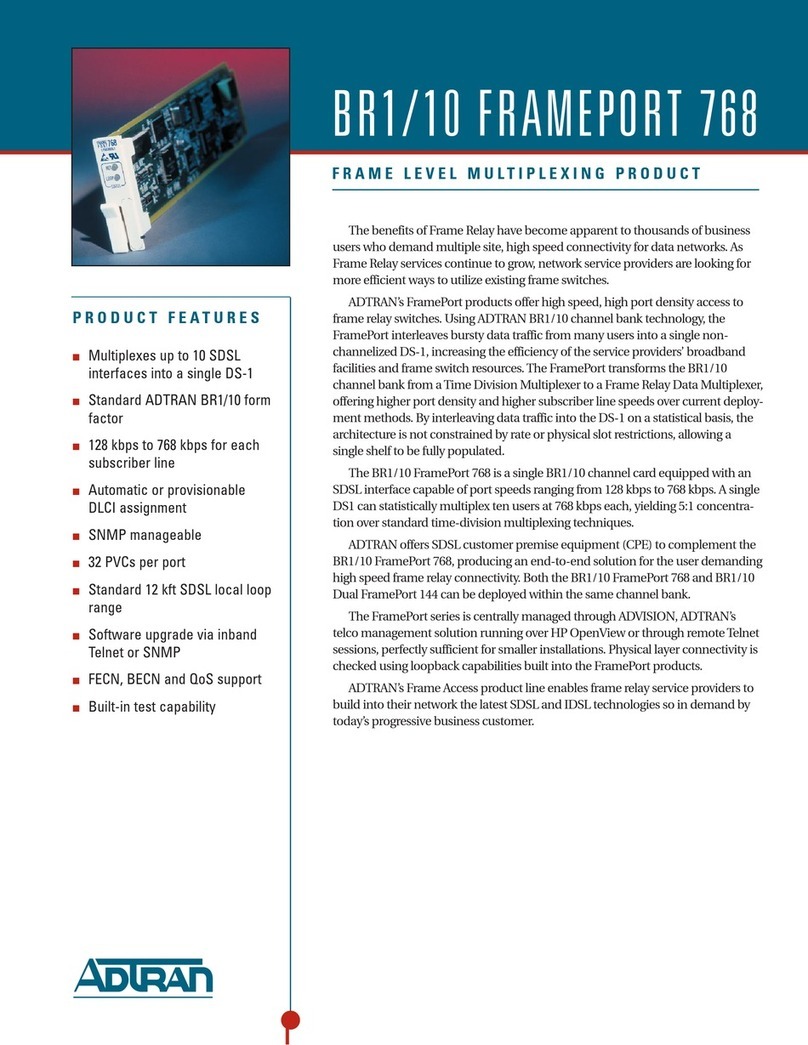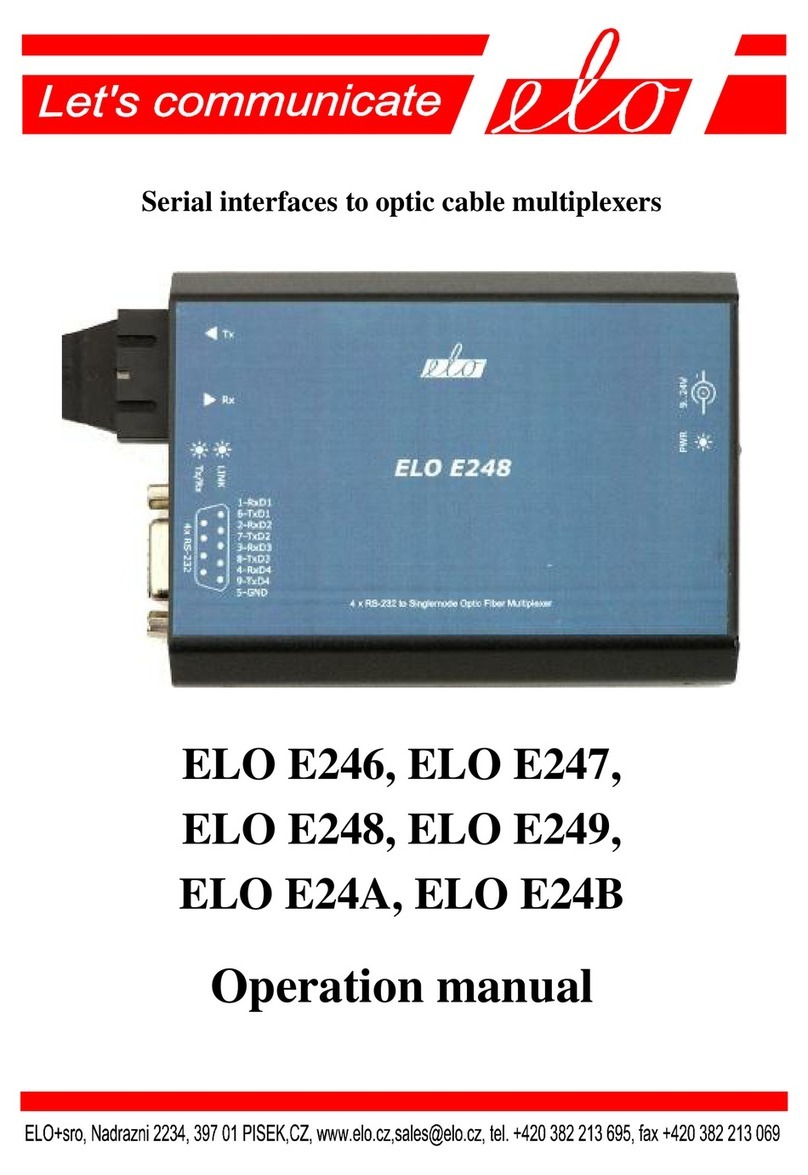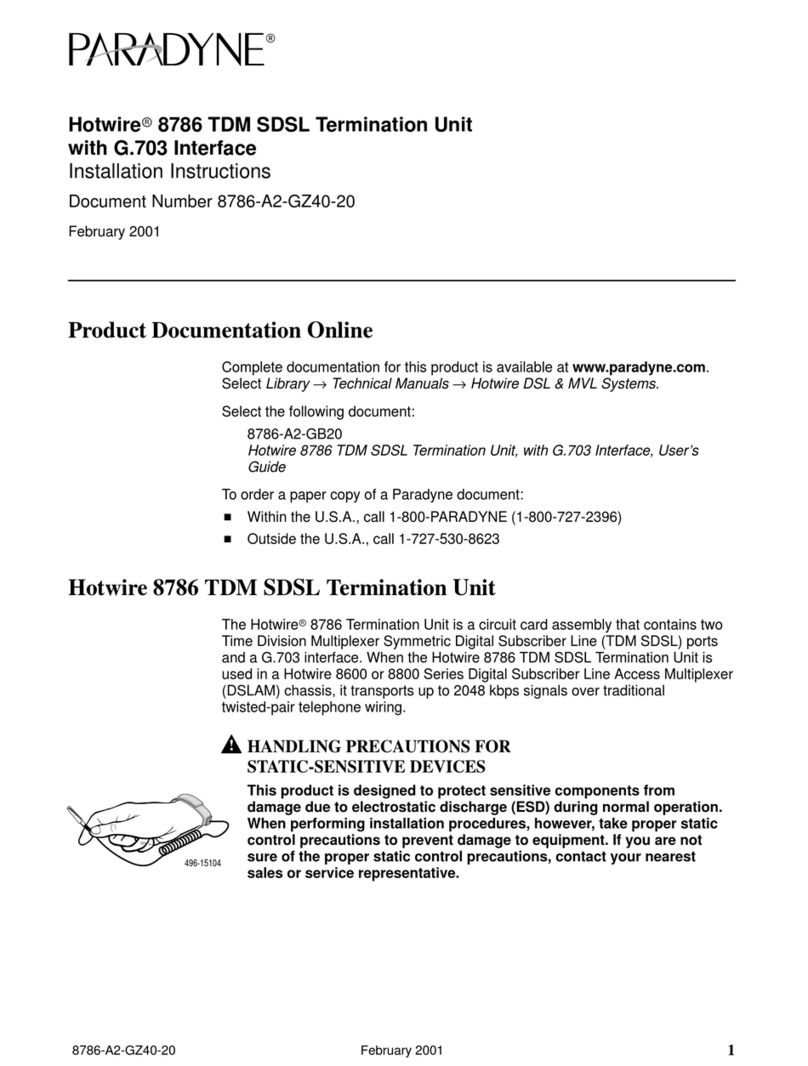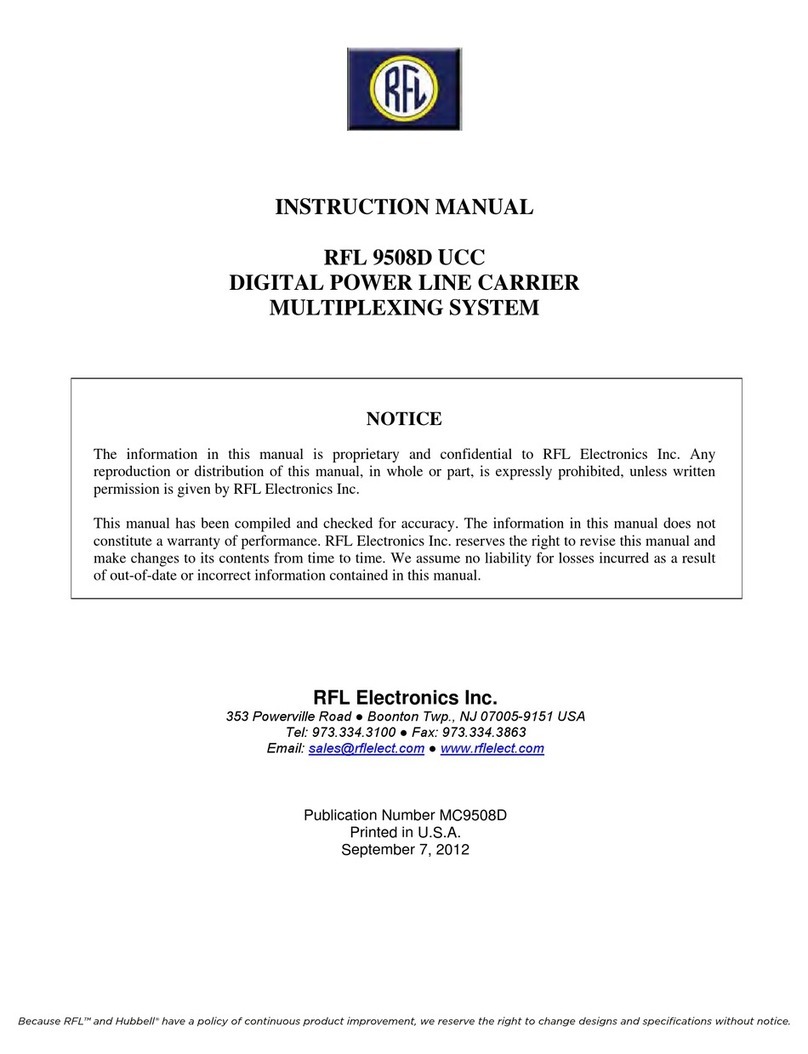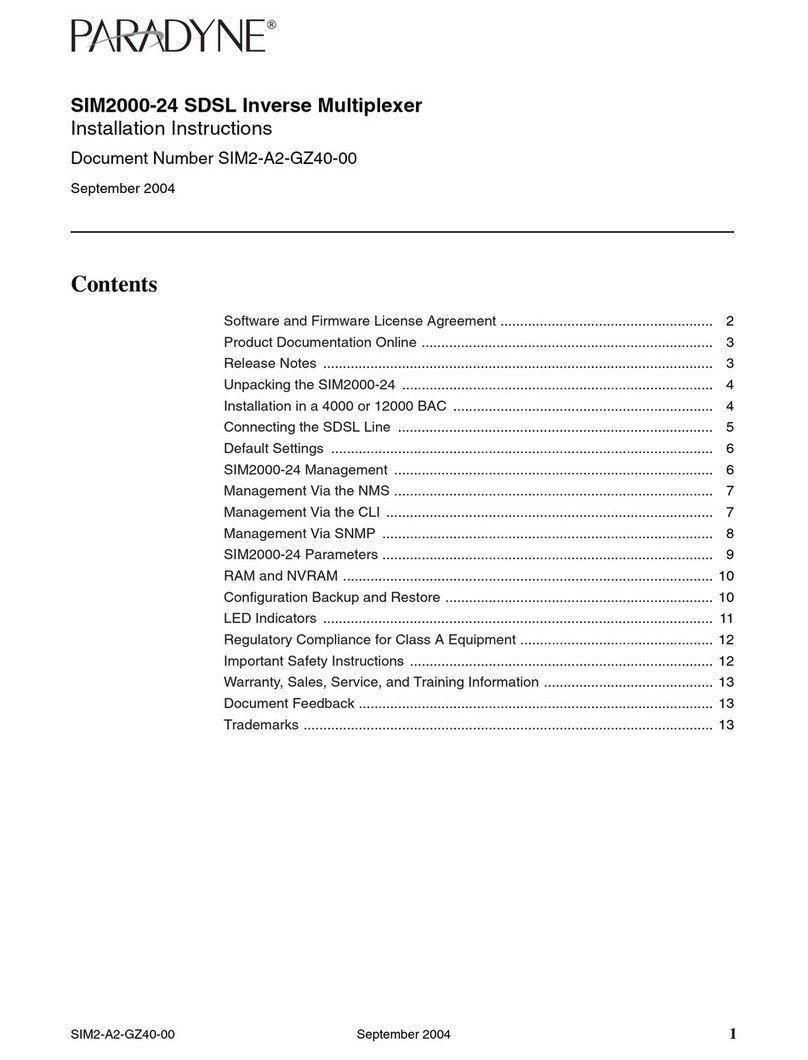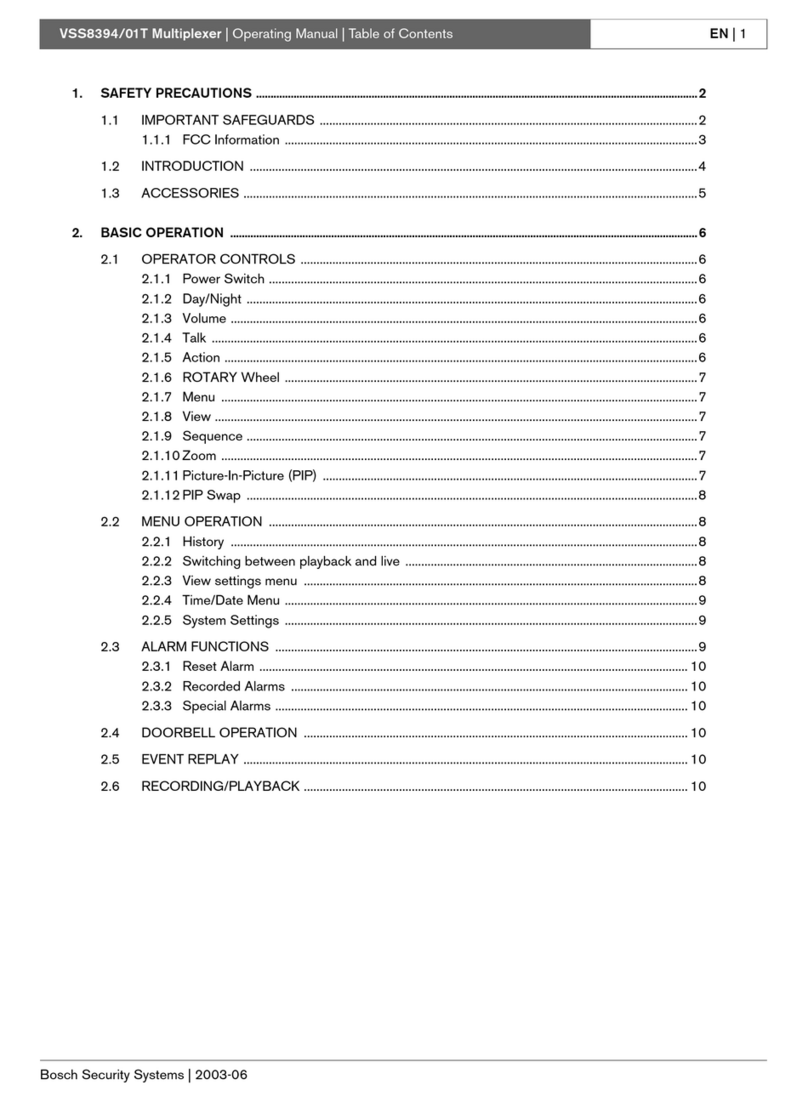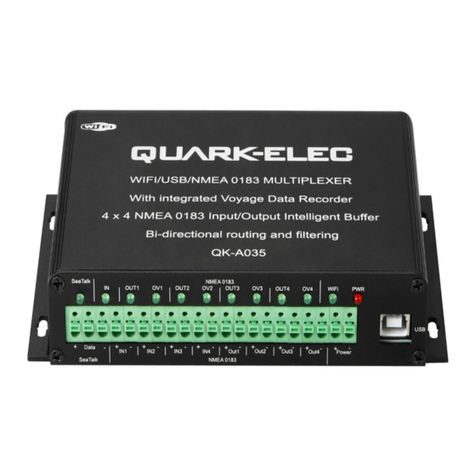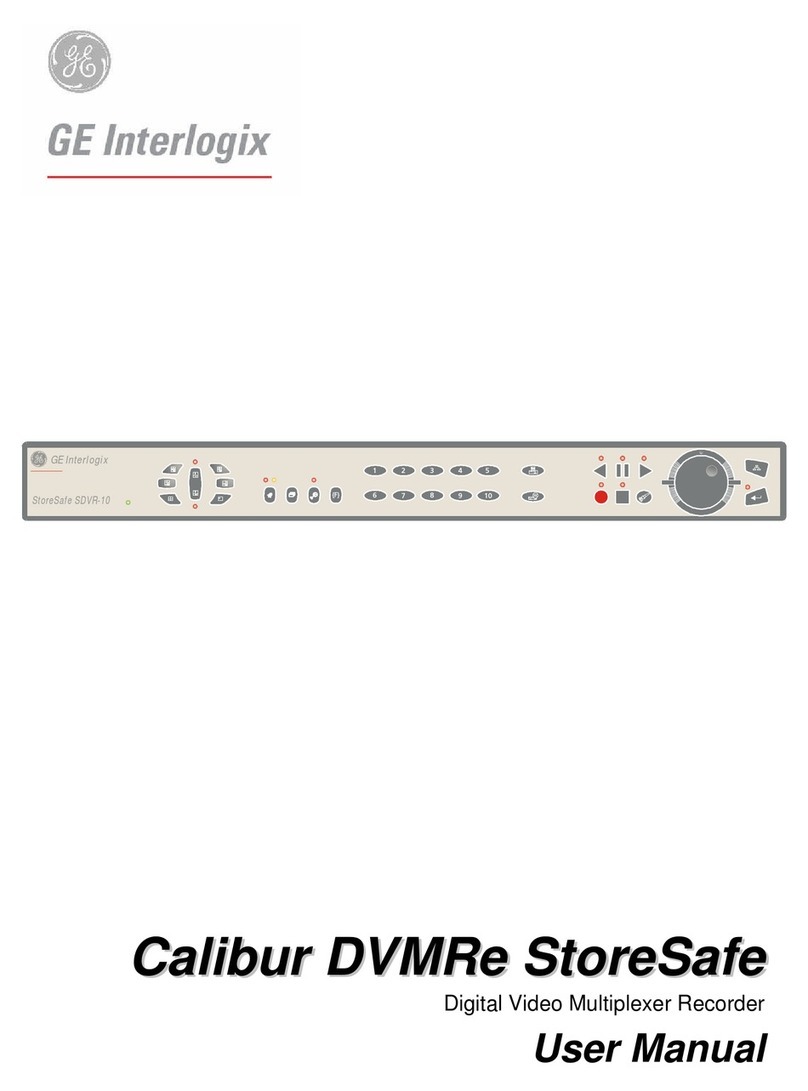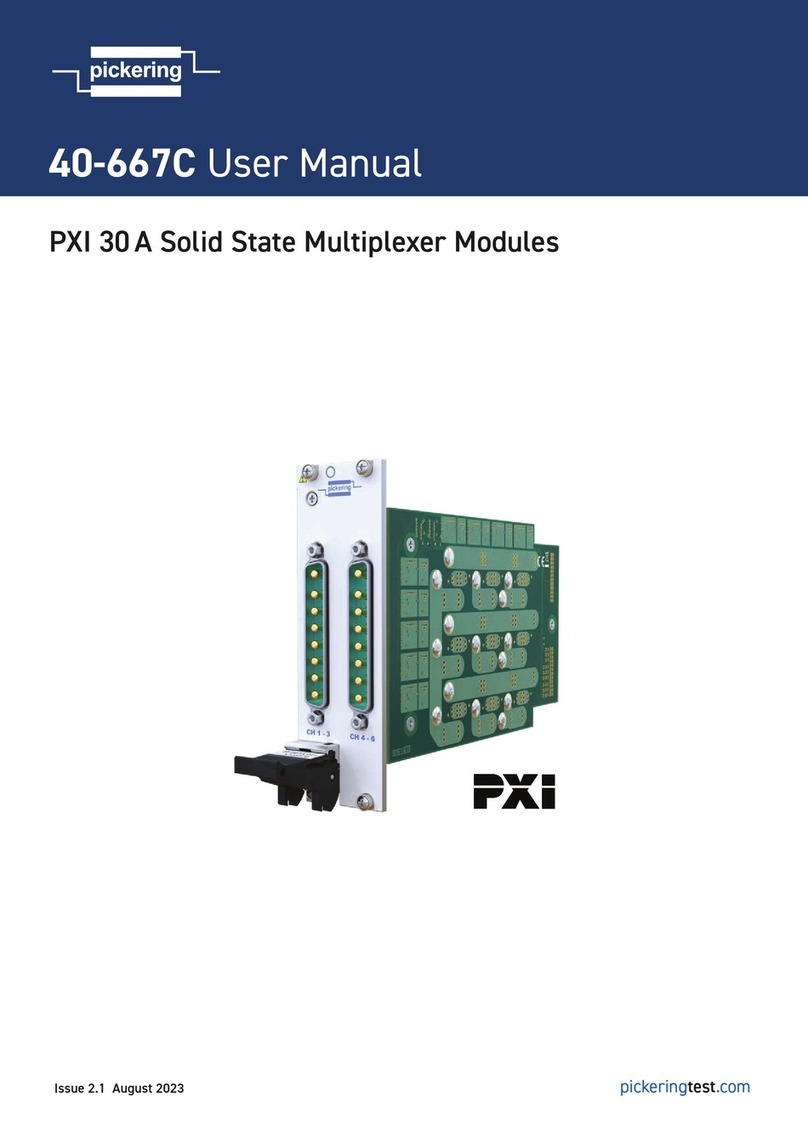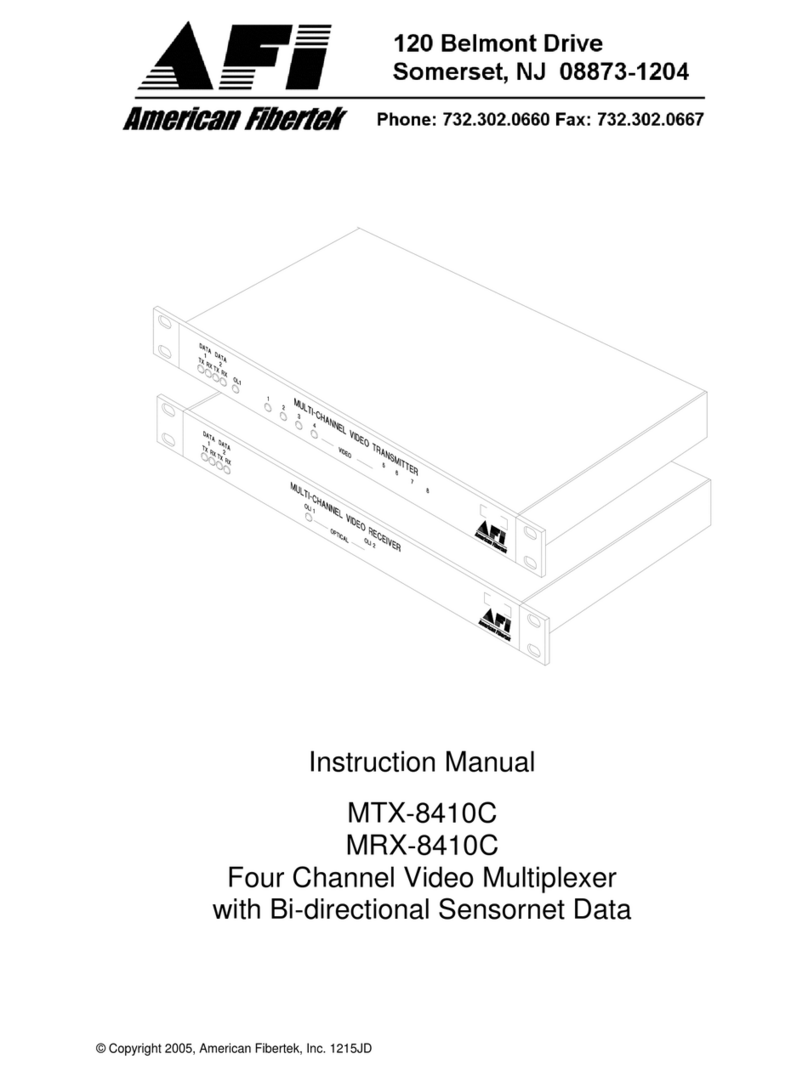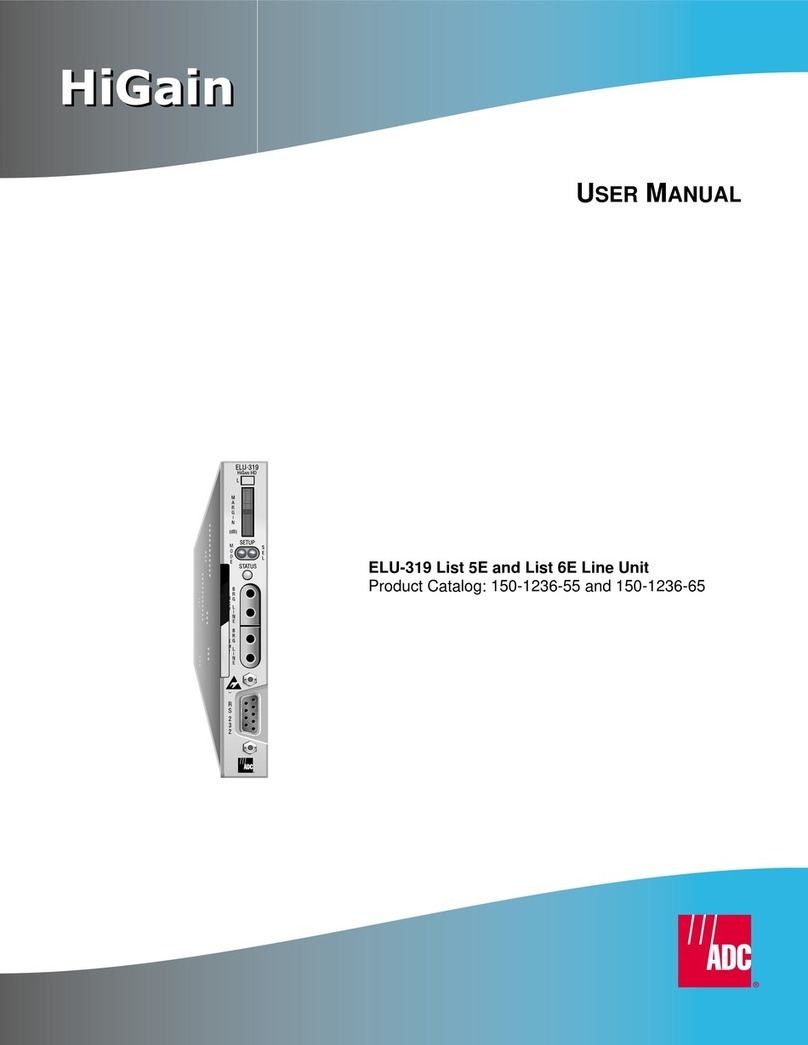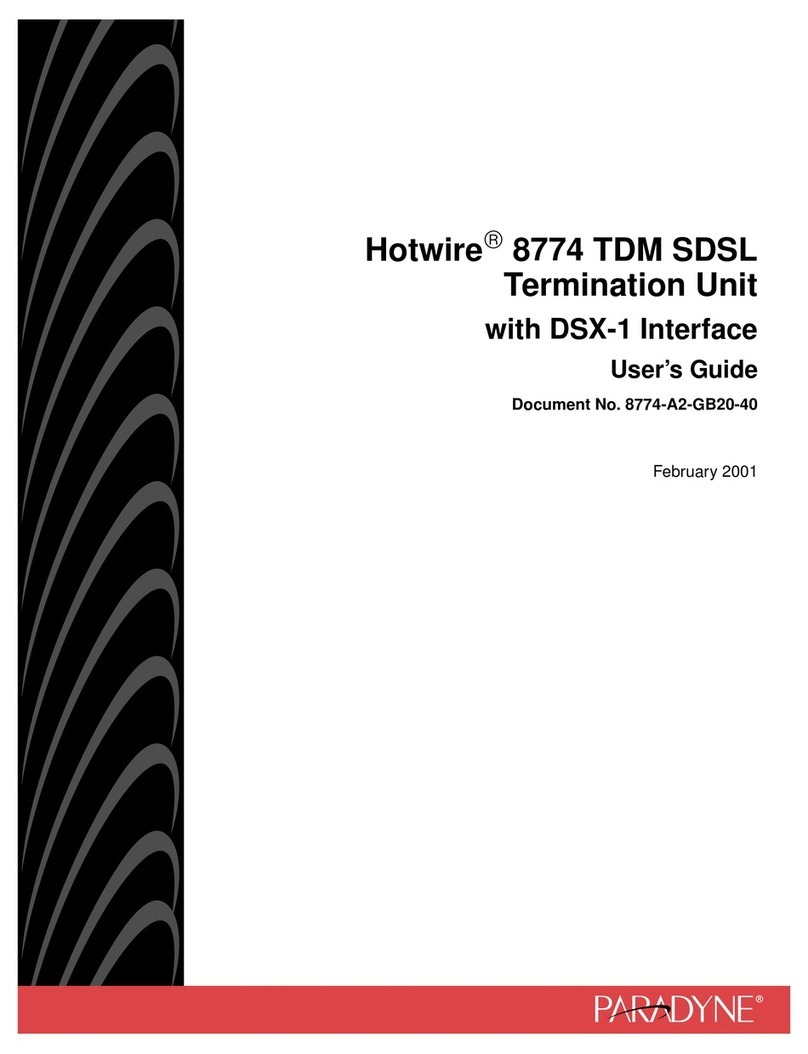
7
O3-4D1L3 U2
1631, Issue 4, October 2009
Table 3. System Alarm Behavior:
Pulsecom O3-4D1L3 to Pulsecom O3-4D1 Configuration
Alarm Stimulus System A Response System B Response
System A DS1-1 LOS DS1-1 LED (red) / DS1 alarm relay / TX AIS
upstream / DS1-1 LOS alarm in craft port DS1 LED (yellow) / DS1-1 drop AIS / DS1-1
AIS (FE) alarm in craft port
System A DS1-2 LOS DS1-2 LED (red) / DS1 alarm relay / TX AIS
upstream / DS1-2 LOS alarm in craft port DS1 LED (yellow) / DS1-2 drop AIS / DS1-2
AIS (FE) alarm in craft port
System A DS1-3 LOS DS1-3 LED (red) / DS1 alarm relay / TX AIS
upstream / DS1-3 LOS alarm in craft port DS1 LED (yellow) / DS1-3 drop AIS / DS1-3
AIS (FE) alarm in craft port
System A DS1-4 LOS DS1-4 LED (red) / DS1 alarm relay / TX AIS
upstream / DS1-4 LOS alarm in craft port DS1 LED (yellow) / DS1-4 drop AIS / DS1-4
AIS (FE) alarm in craft port
System B DS1-1 LOS DS1-1 LED (yellow) / DS1-1 drop AIS /
DS1-1 AIS (FE) alarm in craft port DS1 LED (red) / DS1 alarm relay / TX AIS
upstream / DS1-1 LOS alarm in craft port
System B DS1-2 LOS DS1-2 LED (yellow) / DS1-2 drop AIS /
DS1-2 AIS (FE) alarm in craft port DS1 LED (red) / DS1 alarm relay / TX AIS
upstream / DS1-2 LOS alarm in craft port
System B DS1-3 LOS DS1-3 LED (yellow) / DS1-3 drop AIS /
DS1-3 AIS (FE) alarm in craft port DS1 LED (red) / DS1 alarm relay / TX AIS
upstream / DS1-3 LOS alarm in craft port
System B DS1-4 LOS DS1-4 LED (yellow) / DS1-4 drop AIS /
DS1-4 AIS (FE) alarm in craft port DS1 LED (red) / DS1 alarm relay / TX AIS
upstream / DS1-4 LOS alarm in craft port
System A OC3 LOS OC3 LED (red) / DS1 LED (yellow) / DS1
drop AIS on all ports / TX upstream RDI_L,
RDI_P, and RDI_V / OC3 alarm relay closure
/ OC3 LOS and DS1 AIS (NE) alarms on all
ports in craft port
OC3 LED (yellow) / OC3 RDI_L alarm in
craft port / no impact on drop DS1 signaling
System B OC3 LOS OC3 LED (yellow) / OC3 RDI_L alarm in craft
port / no impact on drop DS1 signaling OC3 LED (red) / DS1 LED (yellow) / DS1
drop AIS on all ports / TX upstream RDI_L,
RDI_P, and RDI_V / OC3 alarm relay
closure / OC3 LOS and DS1 AIS (NE)
alarms on all ports in craft port
System A Incorrect Framing
Format at DS1 Interface DS1-n LED (red) / DS1 relay closure / DS1-n
LOF (NE) alarm in craft port DS1 LED (yellow) / DS1-n LOF (FE) alarm
in craft port / framing errors at DS1 drop
side interface
System B Incorrect Framing
Format at DS1 Interface DS1-n LED (yellow) / DS1-n LOF (FE) alarm
in craft port / framing errors at DS1 drop side
interface
DS1 LED (red) / DS1 relay closure / DS1-n
LOF (NE) alarm in craft port
NOTE: FE = Far End. LED = Light Emitting Diode. LOF = Loss of Frame. LOS = Loss of Signal. NE = Near End.
RDI = Remote Defect Indication. RX = Receive. TX = Transmit.
Figure 4. O3-4D1L3 to O3-4D1 Reference Circuit Configuration
O3-4D1O3-4D1L3
SYSTEM BSYSTEM A
DS1 #1
DS1 #2
DS1 #3
DS1 #4
DS1 #1
DS1 #2
DS1 #3
DS1 #4
